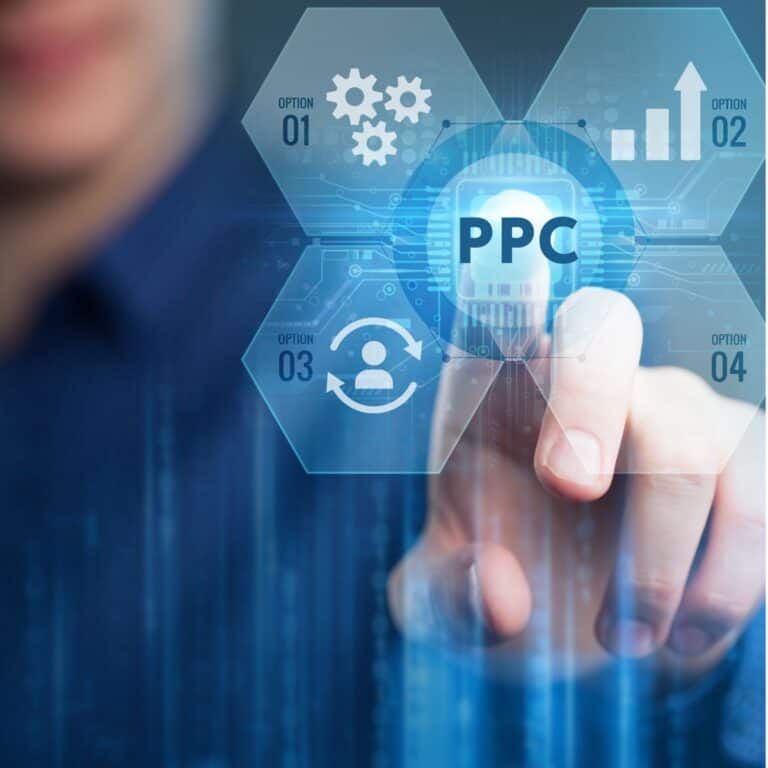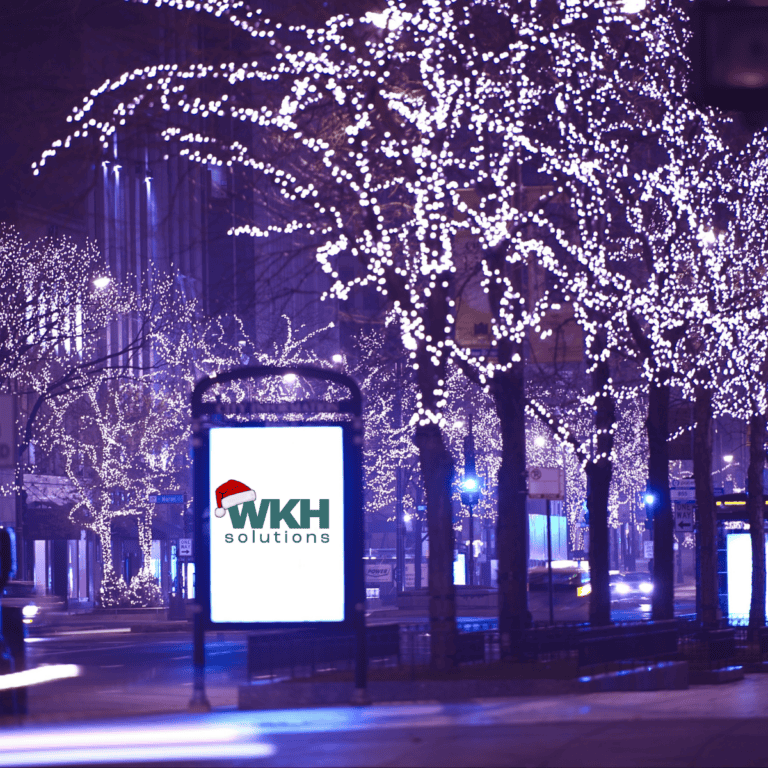The marketing funnel is a visual representation of a customer’s journey from initial awareness to conversion. The marketing funnel model can apply to a brand as a whole or to a specific product or service that a business offers. There are several different ways to break down the segments of the marketing funnel, but each variation follows a similar three-part division. Let’s zoom out and talk about these three, primary steps in the customer journey.
Stages of the Marketing Funnel
Top of the Funnel (TOFU)
The top of the funnel is the widest part of the model and generally includes the most people. Anyone who becomes aware that your brand or business exists enters the top of the marketing funnel. Even if they are immediately deterred from your offerings, they were still, very briefly, part of your marketing funnel. In this stage, prospects become aware of your brand or business and begin to associate it with certain attributes.
Generally, the more prospects at the top of your funnel, the more opportunities you have to convert. However, your focus should remain on your target audience. Of course, there’s nothing wrong with people outside of your target market entering the funnel, but you don’t want to dilute your audience with too many people who aren’t a part of your target segment. Essentially, don’t waste your efforts on reaching people who are highly unlikely to provide a return on your investment.
Marketing during this stage typically includes branded social media strategies, partnerships or sponsorships with other organizations, and any other tactics that get eyes on your brand. The goal of these strategies is to familiarize potential customers with your business and to encourage them to recall your brand when making a purchase later in the process. Having a thorough understanding of your target audience is crucial in knowing where to place your initial advertisements and what kinds of tactics will resonate the most.
Don’t be discouraged if you do not see an immediate return on your marketing efforts, as the top-of-the-funnel is not where conversions happen. It is simply the first step in a longer process. Once prospects are introduced to your business and its offerings, your next challenge is encouraging them to continue down the marketing funnel with your brand in mind.
Middle of the Funnel (MOFU)
The middle of the funnel is where your potential consumers identify a need or a problem they have, and they begin to search for a solution. They weigh different options, potentially recall old purchases or brands they recognize, and perform initial research.
Thus, your marketing tactics in this section should revolve around solving your market’s problems. This could include writing blogs that answer a frequently asked question about your products or implementing SEO to secure a top result for searches relevant to your offerings. Placing yourself in your audience’s shoes can help understand what attributes you should emphasize to make sure your brand satisfies their needs.
Ideally, if your interaction with a customer at the top of the funnel went well, they’ll recall your brand name during this stage of their research. However, you can’t rely on name recognition alone to earn a conversion. Your prospects must be convinced that your business or offering is a better choice than the alternatives. By sharing satisfied reviews, using brand advocates, or emphasizing your brand’s unique traits, you can begin to set yourself apart from competitors in this stage of the funnel.
Bottom of the Funnel (BOFU)
The last section of the funnel includes your prospective customers’ final round of decision-making. The bottom of the funnel includes conversion, which can be anything from a purchase to a completed form or donation. As a business, this is when your previous marketing efforts of brand recognition and advertisements pay off.
Conversions during this section can be made by prospects who have done weeks of research or no research at all. Knowing whether your target audience is more likely to perform extensive research or buy more impulsively can give you perspective on what kind of advertising will be most beneficial for your business. For example, if your business sells cars, your audience is probably spending more time researching and weighing competitors than if your business sells chewing gum. Marketing during this point in the process could include case studies, personalized campaigns, or special discounts for first-time or returning customers.
If you successfully convert a user or customer, the bottom of the funnel is also where you can earn or lose their loyalty. By providing exceptional customer service and using tools like email campaigns and loyalty programs, you can turn a one-time buyer into a returning customer. Selling to returning customers requires significantly less financial investment than trying to convert new customers, and satisfied customers often become free brand advocates. A customer satisfied with your brand is likely to suggest it to friends and family, providing you with valuable, word-of-mouth advertising.
Potential customers are constantly flowing through your funnel, and your business should be prepared with marketing strategies for each stage of the process. While this preparation may seem daunting, it will pay off in the long run.
How You Can Leverage the Marketing Funnel for Your Business
It Can Help Simplify Your Customer’s Decision-Making Process
When it comes to selling products and services, having as much knowledge as possible about your audience is crucial. By monitoring their actions throughout the purchase process, you can learn about your customers’ needs, wants, and expectations. The decision-making process can be multifaceted and complicated, so having a simplified model, like the marketing funnel, is a less overwhelming way to map each interaction a customer has with your brand.
It Highlights Your Business’s Strengths and Weaknesses in the Marketing Process
By breaking the customer journey into three sections, it becomes easier to pinpoint your business’s strengths and weaknesses along the way. For example, you may find that your website gets thousands of visits, but rarely any conversions or purchases. The marketing funnel model shows that your middle-of-the-funnel marketing, like explaining how your brand is the best fit for a prospect or answering questions your customers may have about your product or service, could use some help. Separating the customer journey into digestible pieces makes the marketing process much less intimidating and highlights new metrics to keep an eye on at each step. Your funnel shows where you tend to lose customers, gain customers, and how you can adjust your marketing strategy accordingly.
It Provides SMART Goals for Your Organization
Once you’ve learned where your business is succeeding or failing along the customer journey, you can craft SMART goals, which are specific, measurable, achievable, relevant, and timely, for your team to follow. If your business needs help growing its initial brand awareness, consider introducing the goal of earning 10 new followers on your social media platforms in the next month. Once your team fulfills this goal, you can monitor how it affects the rest of your funnel. SMART goals not only provide measurable data for your company, but they also encourage you to intentionally target your marketing based on each step of the customer journey. Ideally, this intentionality will prevent spending too much time and money on unnecessary marketing endeavors.
Real-Life Examples of the Marketing Funnel in Action
A customer’s journey from awareness to conversion can take 10 seconds or 10 years. Here are a couple of examples of journeys that both follow the marketing funnel model but over different timelines.
Long Customer Journey
In 2019, John hears an advertisement for bicycles by the brand Spoke on his favorite podcast. However, he isn’t in the market for bikes, so he doesn’t think too much about the ad.
A year later, in 2020, John finds interest in more outdoor activities. He goes to a sporting goods store’s website and scrolls through their outdoor gear page. As he’s looking through the bicycles, the brand Spoke catches his eye. He recalls the ad and clicks through to the brand’s website.
On Spoke’s website’s landing page, he sees several positive customer testimonies. He has a few questions about the comfort of the seat and the tires of the bike, but after clicking through the different product offerings, his questions are answered and he finds an option he’s interested in.
John adds the bicycle he likes to his cart, and the site offers him a first-time code for 10% off. The deal is too good to pass up, and John places his order. He gets an email confirmation that prompts him to follow the brand on Instagram to be updated on news in the outdoor bicycling world. When it’s delivered, John loves the bike he receives and returns to Spoke to buy a new helmet and cycling shoes. He becomes a lifelong customer and recommends the brand to all of his friends.
In this example, John’s journey through the brand funnel takes over a year, but it results in a loyal customer. While your brand’s advertisements may not lead to immediate conversion, they can lead to purchases and new customers in the long term. Because bicycles are a larger purchase that often requires more thought and research before buying, Spoke knows not to expect an immediate return on its marketing efforts.
Short Customer Journey
Marie and her friends are leaving lunch and pass by an ice cream shop. They smell the fresh waffle cones and immediately decide they are all craving a scoop of ice cream to top off their lunch.
This is the only ice cream shop in walking distance, so Marie and her friends don’t consider any other options. They walk into the shop and order their ice cream.
In this example, Marie and her friends complete the entire funnel in minutes. Ice cream is typically an impulsive buy and doesn’t require much prior research.
How We Can Help
If your business or brand does not follow the traditional marketing funnel, there are several other visual ways to understand a customer journey. Feel free to check out our blog post on the marketing flywheel, another model that represents the purchasing process. At WKH Solutions, we can coach you about where to focus marketing efforts for your business and provide marketing support at every stage in the process. We specialize in top-of-the-funnel efforts, like the creation of eye-catching and memorable logos, bottom-of-the-funnel differentiators, like SEO and email campaigns, and everything in between. If you or your business need help marketing your offerings anywhere along the customer journey, feel free to check out our services to see if it could be a good fit for your goals.





